
In my union work, I often quote the Old Testament, 1 Samuel 17:40 “And he [David] ook his staff in his hand, and chose five smooth stones out of the brook, and put them in a shepherd’s bag which he had; and his sling was in his hand: and he drew near to the Philistine.”
My point in using this verse with my union’s members is to remind them about David and Goliath, one of the greatest examples of asymmetrical warfare ever. Preparing for battle against a larger and stronger opponent, David took the time to find five smooth stones in the stream bed – the weapons he needed to fight the stronger foe.
I learned this metaphor from Marshall Ganz, a mentor and friend from the United Farm Workers since 1968. He titled his 2000 doctoral dissertation at Harvard “Five Smooth Stones.”

When Marshall reworked it for publication, he changed the title to the more easily understood Why David Sometimes Wins: Leadership, Organization, and Strategy in the California Farm Worker Movement.
Does this fascinating story have a point?

It does have a point. Another verse from the Old Testament, Exodus 30:34-36, informs this blog about Mandy Aftel. “And the Lord said unto Moses, take unto thee sweet spices, stave, and onycha (the door membrane of a snail-like mollusk found in the Red Sea), and galbanum; these sweet spices with pure frankincense; of each shall there be a like weight And thou shalt make it a perfume, a confection after the art of the apothecary, tempered together, pure and holy.“

God spoke of mollusk shells to Moses, hence the shells here at Mandy Aftel’s.
Working out of her brown-shingle home on Walnut Street just south of Vine Street, Aftel is a world-reknowned perfumer. The house was designed by San Francisco architect Cornelius Sarsfield McNally, who also designed the McCreary-Greer House at 2318 Durant Avenue, which houses BAHA’s offices.
Late last November, Leonard Pitt, whose love of chocolate and Balinese dancings and Detroit and Paris and paperback novel coves make him an easy member of the Quirky Berkeley A List, took John Storey and me and several others to Mandy’s home and introduced us. Shout out to Leonard for that.
Aftel came from Michigan to Berkeley in 1970 with a graduate degree in counseling from the University of Michigan.. She bought the house on Walnut in 1977 and practiced as a psychotherapist. Many of her patients were artists and writers.

In 1982, Putnam published her first book, Death Of A Rolling Stone: The Brian Jones Story. Jones was a founder of the Rolling Stones. Jones and the band parted ways in early June, 1969. Jones’ legal problems stemming from drug use meant that he could not get a work permit for the upcoming Rolling Stones tour of North America.
Jones issued a statement in which he said “I no longer see eye-to-eye with the others over the discs we are cutting. ”
He planned to go to Hyde Park for the July 5, 1969 [My 18th birthday – I remember the day vividly] “Stones in the Park” free outdoor festival to show that he had no hard feelings about the band or Mick Taylor, the band’s new guitar player.
At around midnight on the night of July 2-3, 1969, Jones was discovered motionless at the bottom of his swimming pool at his Cotchford Farm in Sussex.

A.A. Milne owned Cotchford Farms and wrote all of his Winnie the Pooh books at the house, often inspired by the local landscape. Milne died at Cotchford Farm in 1956.
Back to Brian Jones for just a moment.

Jones’ Swedish girlfriend, Anna Wohlin, was convinced he was alive when he was taken out of the pool, insisting he still had a pulse. However, by the time the doctors arrived, it was too late and he was pronounced dead on arrival at the hospital, at the age of 27. Wohlin later wrote The Murder of Brian Jones.
The coroner’s report stated “death by misadventure.”
When Aftel was researching and writing the book, she relief on the kindness of Donovan. As in Donovan Philips Leitch, the folk/pop Scottish guitar player and singer. He gave her a place to stay – big rock cred for her on account of this. I fail to see how this book fits in which her trajectory, but I am probably just being too linear. I will note that the music Donovan played a role in my 18th birthday, helping fit the pieces together in an it’s-all-about-Tom view of things.
But this is not all about me. It’s all about Mandy Aftel. Almost 30 years ago she stopped working with the human psyche and started working with natural scents. Her career change from psychotherapist to natural perfumer almost 30 years ago is a pivot for the ages, one that has made all the difference.
Today she is an icon in the world of perfumery and is recognized as the pioneer of natural perfumery. She makes her perfumes in small batches, using only pure and natural ingredients, without any added synthetics – no parabens as preservatives, no glycols as stabilizers, and no petrochemicals


Behind/next to her house is her Archive of Curious Scents, a extraordinary museum of perfume and perfume history. It is open on Saturdays, from 10 am to 6 pm, either by reservation or walk-in. Tickets are $20 for a one-hour visit, $12 for children under 18. Reservations may be made online here.

There is a gorgeous formal rose garden between her house and the museum. The sculpture that is visible in the center of this photograph is from Oaxaca, made by the Aguilera family. Aftel’s over-the-back-fence neighbor is Alice Waters, whose office is at the rear of Chez Panisse is adjacent to the fence. Aftel has known Waters for decades.
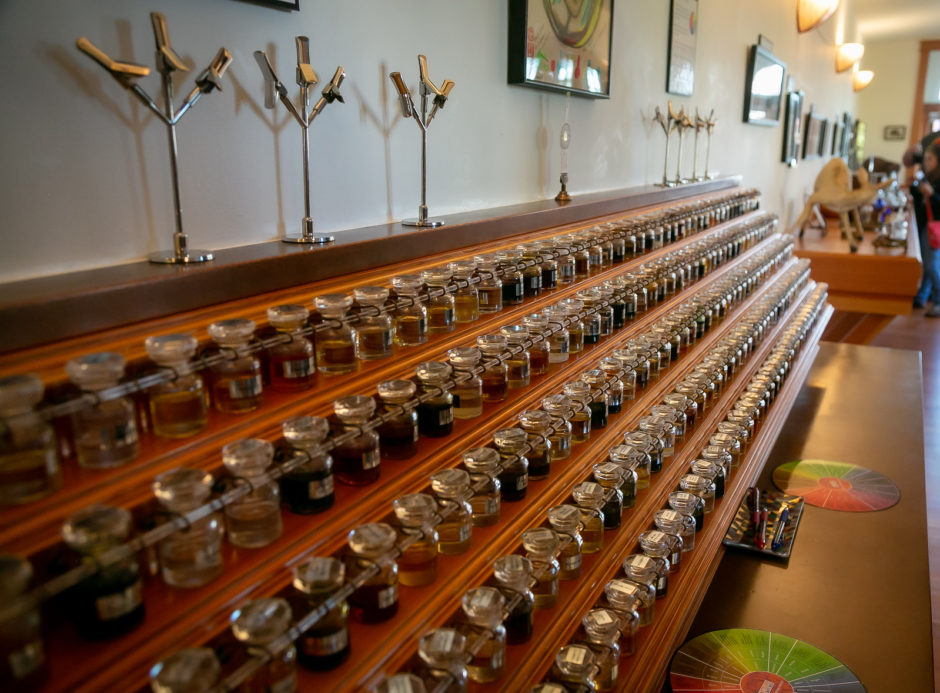
The single long room of the archive/museum could have stepped out of the pages of Architectural Digest. There are etchings, prints, a glorious “scent organ” with hundreds of scents, and a library of the history and art of perfumery.

Aftel designed and made the perfume organ several years ago. A perfume organ is an arrangement of the three components to a perfume. Their names are drawn from music.
First are the top notes, also known as the opening notes or head notes. The top notes of a fragrance give the first impression and then transition to the heart of the fragrance.
After the top notes evaporate, the middle notes or heart notes emerge. They provide the heart of the fragrance. They last longer than the more ephemeral top notes and have a strong influence on the base notes that will follow.
Last are the base notes, the final fragrance notes that appear once the top notes are completely evaporated. Base notes provide the lasting impression after the top notes have dissipated.

Aftel has created a visual depiction of the scenes, her Natural Perfume Wheel.
She showed us through the museum herself and answered our questions. For the record, this is not the school teacher us and out. It is John Storey and I. He is an increasingly participant in Quirky Berkeley interviews.

I tried to get it all and to get it right.
From the library:



There are hundreds of drawers with the raw botanical products used to make the scents.
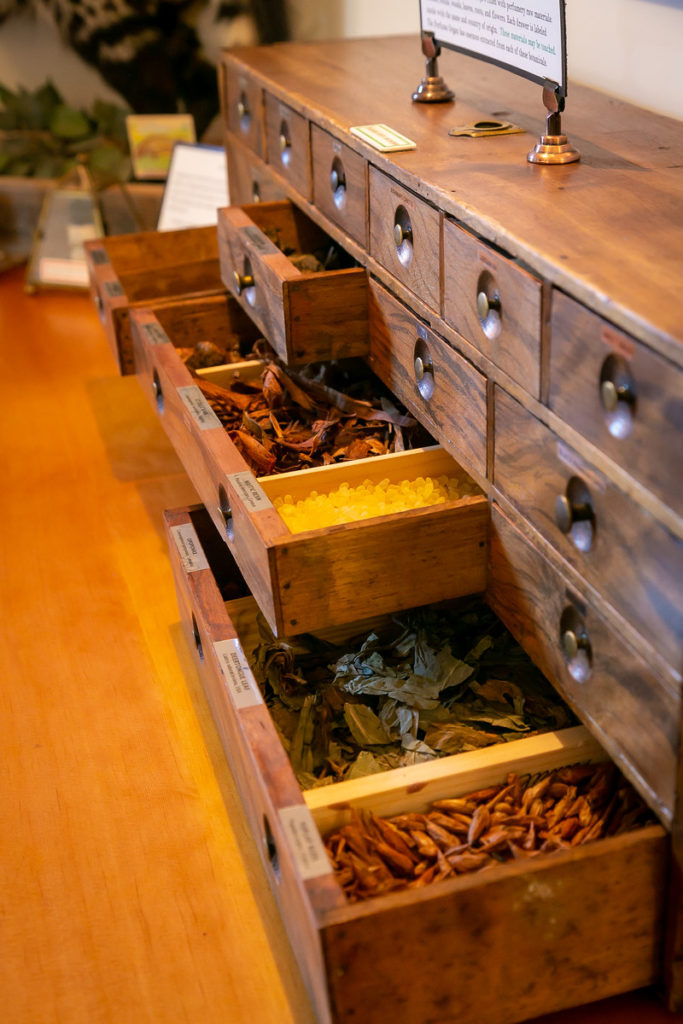



Visitors are encouraged to touch and smell.


These two, the youngest members of our group, were all in. Their friendship with each other and their curiosity were a delight. Miles is the grandson of Lenny Pitt. His friend is Amelie.
More photos from the museum:

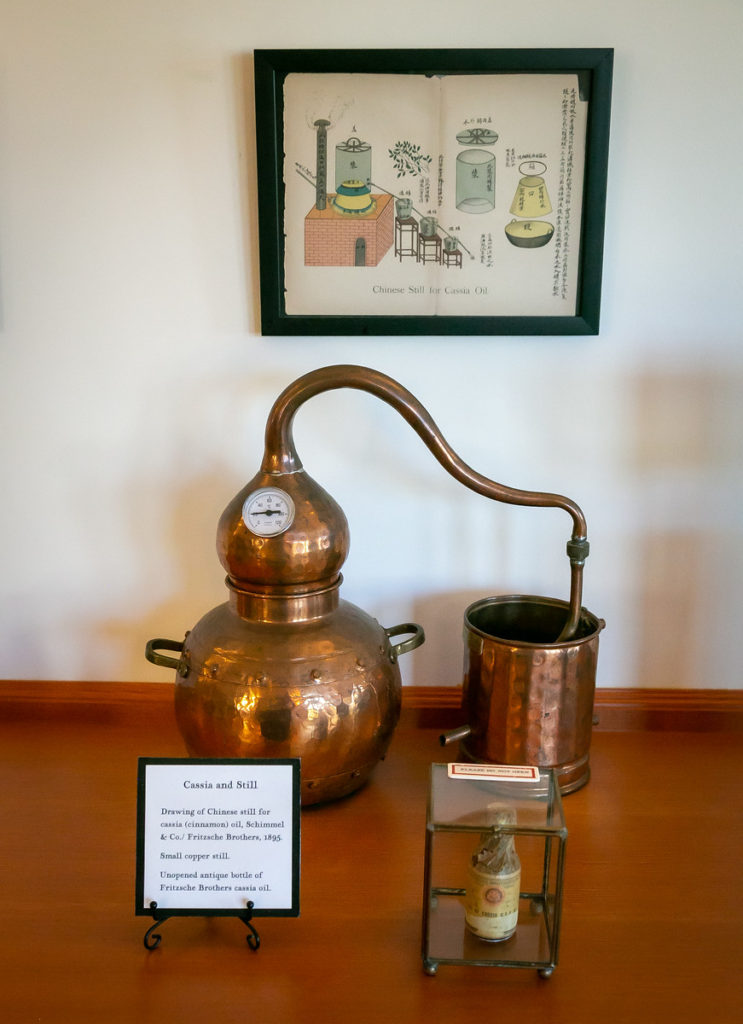
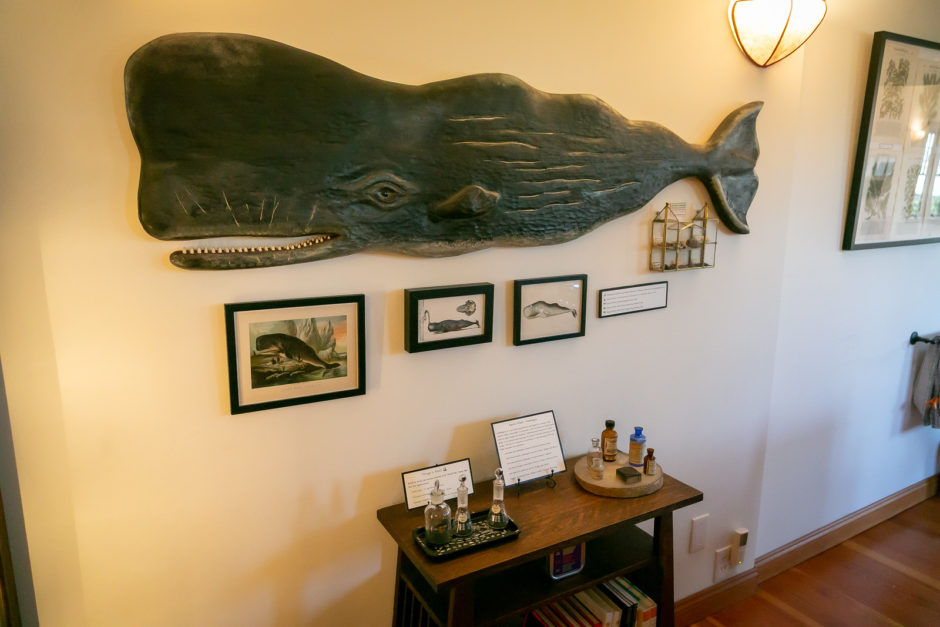

Ambergris is a solid, dull grey or blackish, waxy, flammable substance produced in the digestive system of sperm whales. Sperm whales eat large quantities of cephalopods such as squid and cuttlefish. In most cases the indigestible elements of their prey, such as the beaks and pens, are vomited out before digestion. These parts move into the whale’s intestines and bind together. They slowly become a solid mass of ambergris, growing inside the whale over many years.
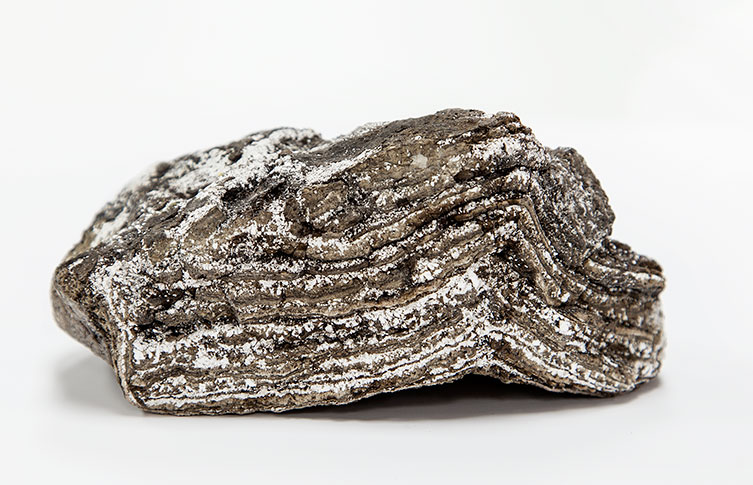
Freshly produced ambergris has a marine, fecal odor. It acquires a sweet, earthy scent as it ages, commonly likened to the fragrance of rubbing alcohol without the vaporous chemical astringency. Ambergris has been highly valued by perfumers as a fixative that allows the scent to endure much longer. For many perfumers it has been mostly replaced by ambrosian, a naturally occurring terpenoid, a large and diverse class of naturally occurring organic chemicals. This ambrosian is not to be confused with ambrosian as in Ambrosian chant, the liturgical antiphonal chant repertory of the Ambrosian rite of the Roman Catholic Church. It is primarily associated with the Archdiocese of Milan, and named after St. Ambrose .
Need I tell you that Aftel is Old School and works with ambergris? Humans have been using it for more than


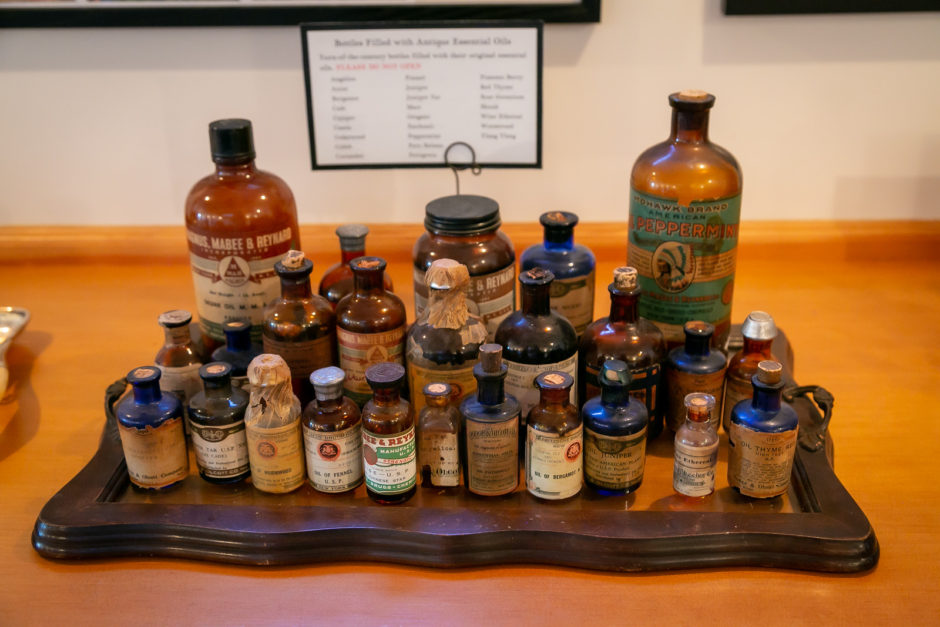


A number of viverrid species secrete civet oil in their perineal glands, a pair of glands that are situated near the anus in some mammals and secrete an odorous substance.
Viverridae is a family of small to medium-sized mammals, the viverrids, comprising 15 genera, which are subdivided into 38 species. This family was named and first described by John Edward Gray in 1821. Members of this family are commonly called civets or genets. They include the African civet (civettictis civetta), large Indian civet (viverra zibetha) and small Indian civet (viverricula indica). Most civet is produced in African farm
Civet is a soft, almost liquid material. It is pale yellow when fresh, darkening in the light and becoming salve-like in consistency. Its odor is strong, even putrid as a pure substance, but once diluted it is pleasantly and sweetly aromatic. It is prepared for use in perfumery by solvent extraction to yield either a tincture, an absolute, or a resinoid.

The hyrax (aka rock rabbit or lassie), is a small furry mammal that looks like a plus-size guinea pig, or a rabbit with rounded ears and no tail. Hyraxes have stumpy toes with hoof-like nails; and four toes on each front foot and three on each back foot – 14 toes in all.
Essence from the hyrax’s dried up crystalline fecal matter can be used in making perfume, combining olfactory facets of musk, civet and castoreum. Castoreum? Good question. It is a yellowish exudate from the castor sacs of the mature North American beaver (Castor canadensis) and the European beaver (Castor fiber). Beavers use castoreum in combination with urine to scent mark their territory. the odor is described as animal, warm, fecal, and urinal. Nice!
Hyrax fecal matter is used as base note in some perfumes.


Several times a year, Aftel offers a small class of about eight students. Students complete a workbook before the class starts, and then attend the intense three-day in-studio instruction where they will work with 18 oils. Information on the classes may be seen here.
The absolute lack of clutter, despite the thousands of raw botanical ingredients, essential oils, and absolutes, is striking. The cabinets and drawers themselves are stunning – drawers from a Chinese apothecary, a typesetting cabinet, and a watchmakers cabinet.

I am reminded of Teodoro the pharmacist in Jorge Amado’s Dona Flor e Seus Dois Maridos (Dona Flor and Her Two Husbands) and his credo of “a place for everything and everything in its place.” Actually it’s “Um lugar para tudo e tudo no sue lugar.” but you get my drift. With Aftel there is a strong and confident hand at work here.
The house is not open to the public, but Aftel took us to see two rooms used in her business.

The front room looks out east onto Walnut Street.
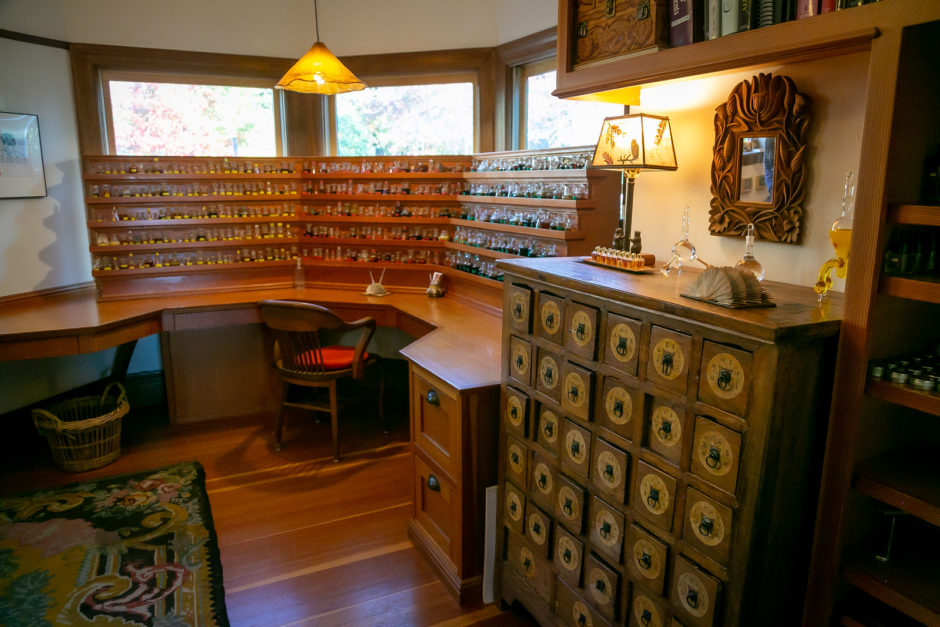
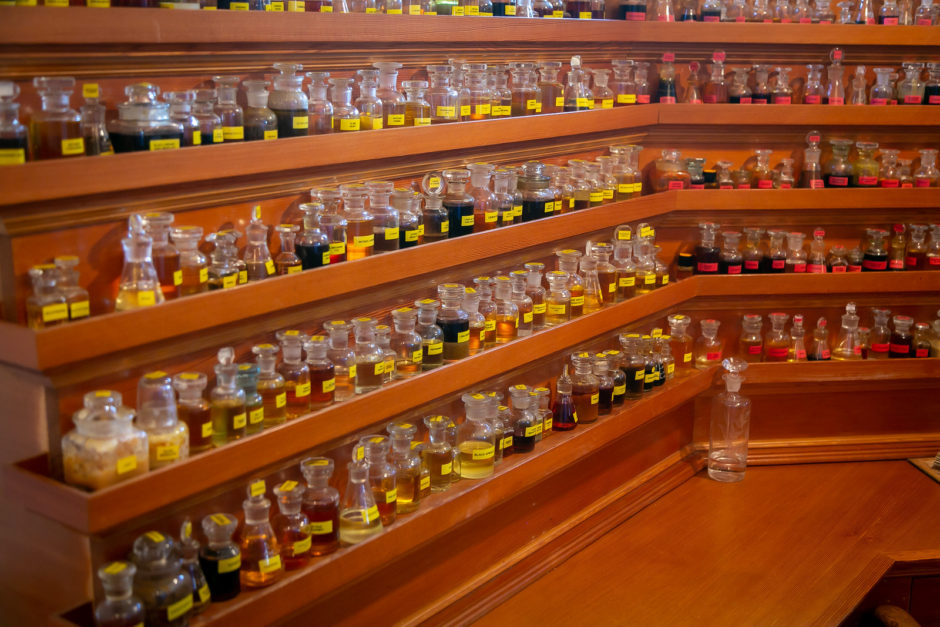
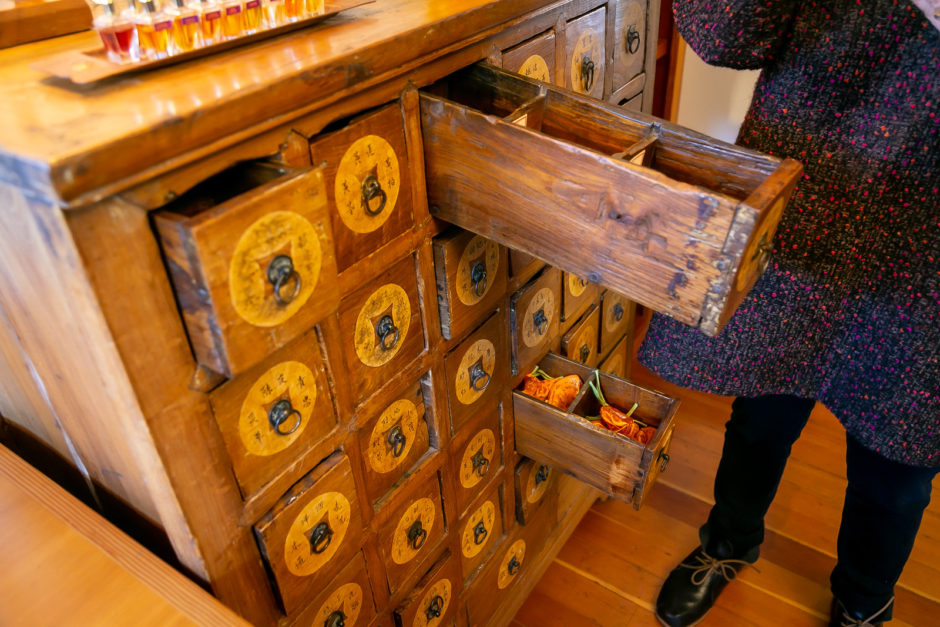
In this room Aftel combines the base notes (blue labels), middle noes (red labels), and top notes (yellow labels). The Chinese apothecary cabinet was the first piece of furniture Aftel bought for the perfume business.

Here Aftel stands in the front room with her husband Foster Curry.

These are mini bottles. Tiny, no?
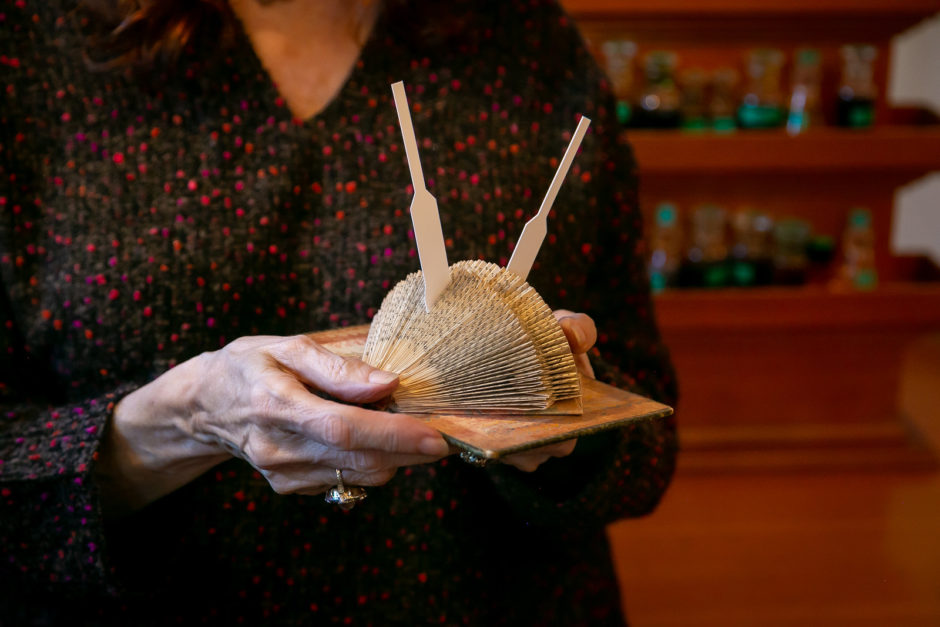
Museum guests are given three scent-testing strips (shown in this photo) and a piece of wool to cleanse their olfactory palate between samples. In the culinary world, a palate cleanser (remise en bouche in French, intermezzo in Italian) is a neutral-flavored food or drink that removes food residue from the tongue allowing one to more accurately assess a new flavor. They are often used between tasting wine or cheese or other strong flavors, or between main dishes in cultures where diversity of flavors is valued.
With perfumes, coffee beans are often offered as an olfactory cleanser to combat olfactory habituation. The efficacy of this method doesn’t withstand scientific scrutiny, and Aftel uses a strip of wool to cleanse the sense of smell and help prevent olfactory fatigue.
Y puis il y a les boîtes de patch. And then there are the patch boxes.

One container option for her solid perfumes is an antique patch box, a small, usually rectangular, sometimes oval box used as a receptacle for beauty patches.

During the reign of France’s Louis XV in the 18th century, black patches of gummed taffeta were popular with fashionable women (and sometimes men)

The patches were used to emphasize the whiteness of the skin and/or to conceal blemishes. They also had hidden meanings. Beautifully decorated little boxes were created to hold the patches.



Aftel’s customers return the patch box when it is empty and she refills the solid perfume.
Aftel only sells online. She processes the orders, packs and ships them. She does this work from a room on the second floor.
The shipping room has a wonderful typesetting cabinet with sample bottles.


The lid top of the bottle is bigger than the bottle.

These are part of her culinary line – chef’s sprays. She has worked with chefs, mixologists, producers of fine chocolate, ice cream, candies and baked goods and was a pioneer in the use of essential oils in cooking.

Aftel wraps her bottles in exquisite tissue paper imprinted with 19th century images.

Aftel compiled the images, designed the paper, and had it printed. It all took a year.

She saves beautiful little color images that she uses as note cards with the shipments.

These are books that Aftel has written. After the Brian Jones book, she has stuck with scents and perfume.

Her first scent-related book, Essence and Alchemy, was published in 2001. Publisher’s Weekly called it a “most extraordinary treatise on the history and making of perfume” and praised Aftel’s “sheer delight” in the material and her “irreverent sensibility.” Later works include Scents & Sensibilities: Creating Solid Perfumes for Well-Being (2005) and Fragrant: The Secret Life of Scent (2014).
In 2004, Aftel co-authored with Daniel Patterson (an American chef, restaurateur, and food writer, and a leading proponent of California cuisine) a cookbook called Aroma: The Magic of Essential Oils in Foods and Fragrance. In its review of the book, The New York Times called it perhaps “the only current American cookbook featuring recipes for both meals and baths”—saying despite their disparate backgrounds, the two authors “connect in their longing to marry scent and taste.”
דַּיֵּנוּ
Dayenu is a song that is part of the celebration of Passover. The word “dayenu” means approximately “it would have been enough,” “it would have been sufficient,” or “it would have sufficed.”
All that we have seen of Mandy Aftel up to this pointwould have sufficed, but there is one more outward and physical manifestation of Aftel’s inward and spiritual grace. How’s that for a mixed religious metaphor?
Mandy became friends with Leonard Cohen. My generation would think of “Suzanne” when we heard his name. Younger people would think of “Hallelujah.” While with “Hallelujah,” you might wonder why I have not gone to the Bible to illustrate the origin of Cohen’s line “They say that there was a secret chord / that David played and it pleased the Lord…” I have not done so because there is not such mention in the Bible. It was a Leonard Cohen creation.
Be that as it may, there are several pieces of art that Cohen made for Aftel.



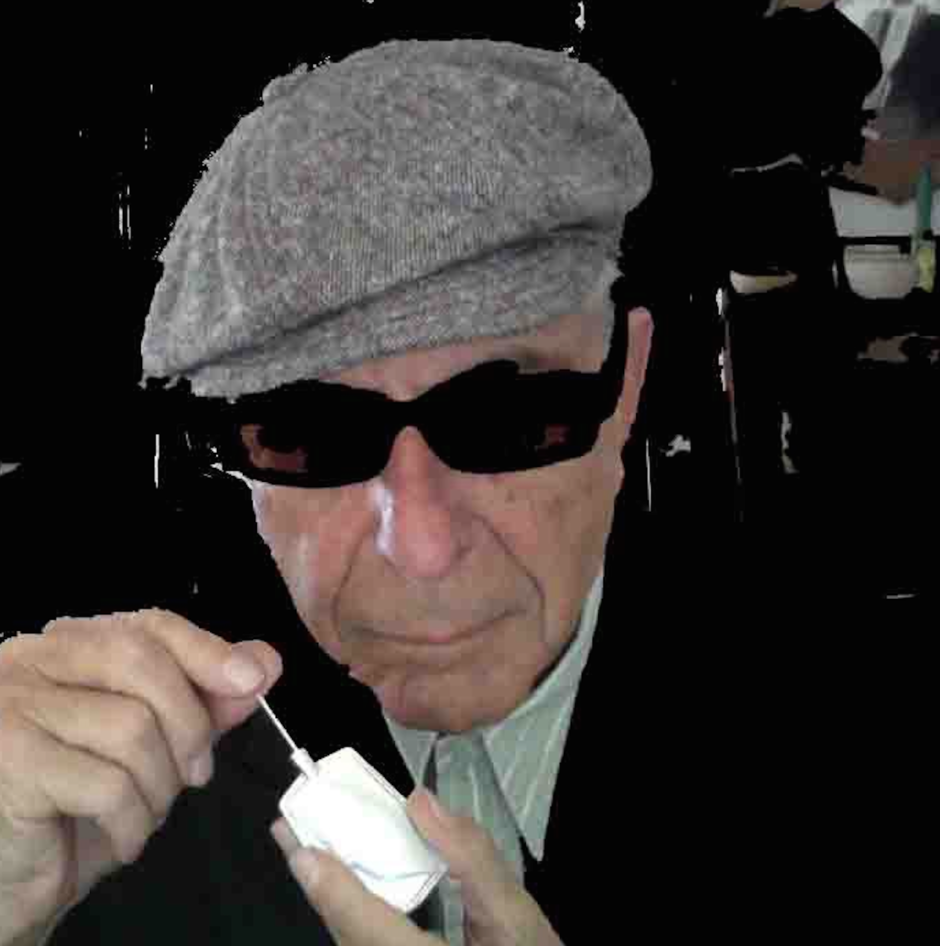
Cohen holds a small flask of oud luban perfume. Of it, Aftel writes: “Dark, resinous oud is the most expensive essence in the world – here 8 varieties are blended to get the desired notes. This is a perfume of great highs and lows, with no middle notes. It opens with the fresh citrus top notes of the finest hojari frankincense (“Luban” in Urdu) and resinous notes of elemi. Followed by balsamic notes of the faintly vanilla benzoin, the spicy-balsamic opopanax, and the fine cognac-like notes of aged patchouli. The drydown reveals the smoky choya ral and precious oud – intimate and softly animal, like a lover’s body.”
Dayenu indeed.
Aftel’s attention to detail is exhaustive. The bottles, the storage cases, displays, the paper with which shipped perfumes are wrapped, and the cards that accompany the shipments are all perfect.

Aftel and her perfumes are a municipal treasure. By virtue of the power vested in me by the Quirky Berkeley charter, I hereby name Mandy Aftel a cultural and spiritual quirky treasure of Berkeley. The passion, devotion, and curiosity that she exhibits are rare and inspiring.

Detroit has been good to Berkeley giving us its daughter Mandy Aftel and its son Lenny Pitt. My most recent experience in Detroit included nine hours in the ER in the middle of the night after the onset of shingles. I forgive Detroit for that. It pales in balance.
My friend looked over the draft post. He came to tell me what he thought of it but God forbid he should cut to the chase.
He asked, “Does her place at least a little bit remind you of the Pharmacy of Havana Museum in Matanzas?”
In September 2017, my friend had joined a trip I led to Cuba with IBEW locals who are working to share training and best work practices with Cuban linemen.

On a short training day, our hosts took us by bus to the museum.
The Catalá, Sarrá and Co. s opened the drug store La Reunión Pharmacia in May 1853, at 41 Teniente Rey Street. It was one of the most elegant and prestigious pharmacies of Havana.
After the triumph of the Revolution, La Reunión was nationalized. It remained a working pharmacy until 1999, when the Office of the Havana Historian decided to undertake its restoration and to turn it into the Pharmacy of Havana Museum.
The meticulous notebooks, the drawers of ingredients, the bottles and jugs and vats and pots and elegance remind of Mandy Aftel’s house and archive.
My friend remembers a great moment in Matanzas. Our group wandered up to the second floor. It was elegant, with very very very high ceilings. A grand piano in one room that was otherwise empty called to me the way pianos do.
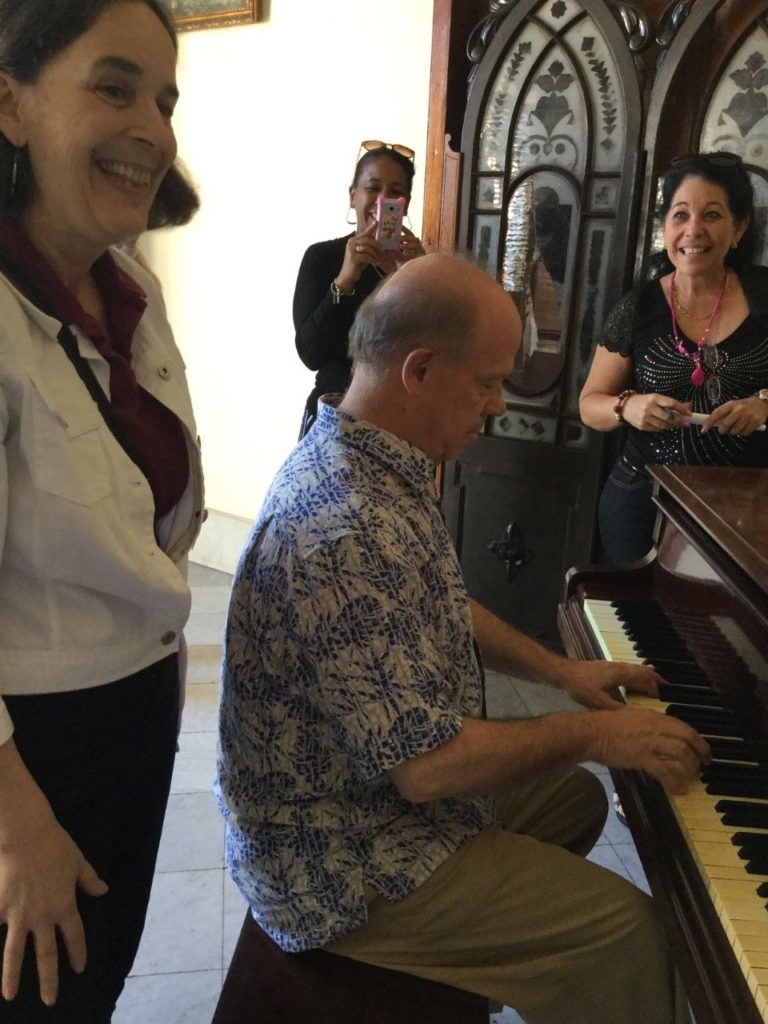
I sat down and without ceremony or hesitation began to play “Guantanamera, ” singing boldly and with confidence in Spanish, helped out big time by Eileen Purcell, an honest-to-god saint who works with us and was part of the trip. This is very out of character for me, but the moment demanded it and I know a call to duty whenI hear it.
“Guantanamera” is Cuba’s most patriotic song, especially when using a poem by the Cuban poet José Martí for the lyrics.
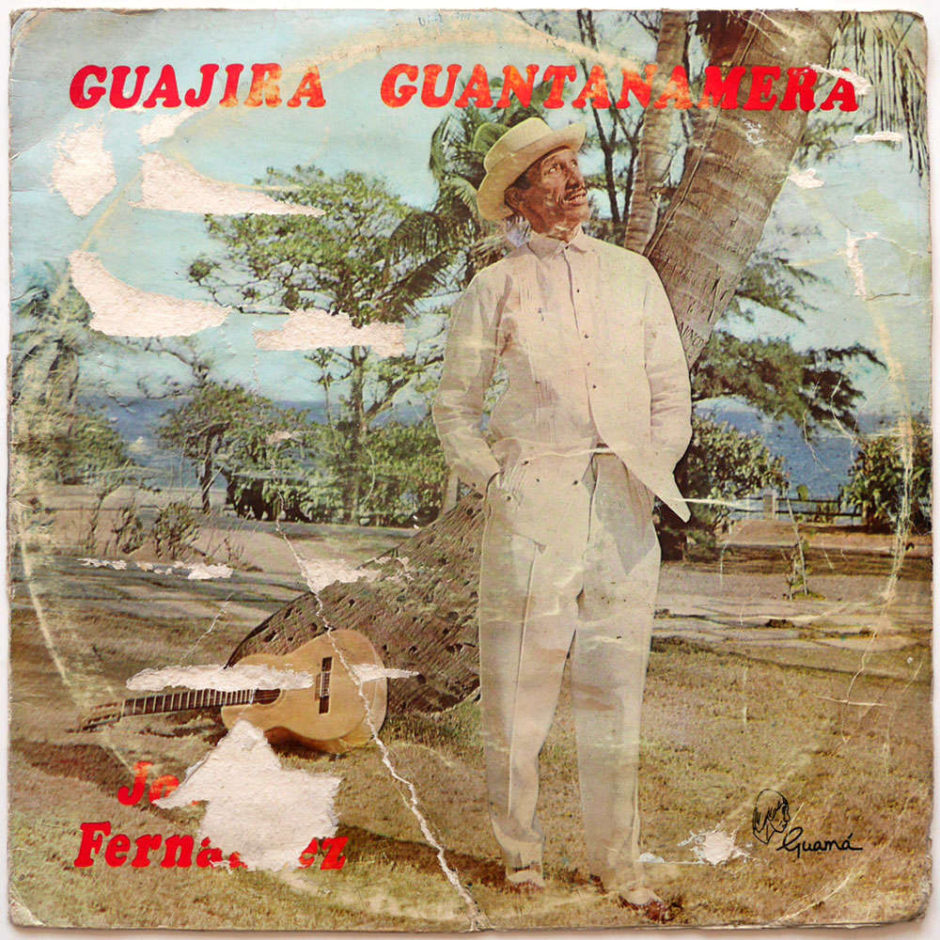
The official writing credits for the song were given to Joseíto Fernández, who first popularized the song on radio as early as 1929.
There was a large group of Cubans with our group as well as the ten or so North Americans. They all gathered around the piano and sang along.

The GREATEST moment was when I sang a verse written after the Cuban Revolution and certainly not sung by the Sandpipers in America. It is, more less – “With the beard of Fidel, we will make a broom, and with that broom we will sweep the Yankees from Latin America. “
I said to my friend, “I’m glad that you remember that moment and brought it up. What do you think of my Mandy Aftel post?”
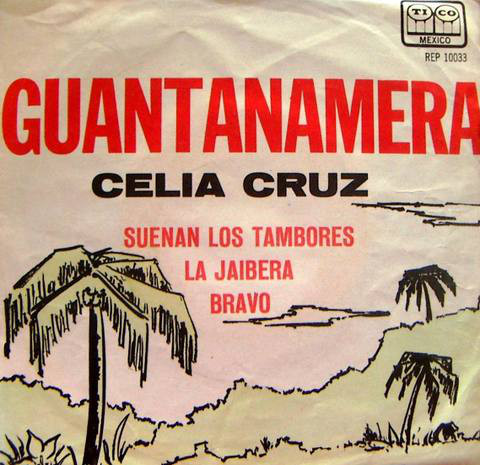
He said he had a recording of the song by Celia Cruz with video from Havana that he guaranteed would blow me mind. I don’t regret what I did – I got stern. Before anything else happened, I wanted to know what he thought of the post.



I too was fortunate to spend some time learning surprising facts from Mandy Aftel — although it was her enthusiasm for and devotion to the worldly and other-worldly scents that she has searched for and worked with that I remember best. She has made a wonderful, exquisite home for scents, presenting their histories and realities as art.
I LOVE AFTELIER FRAGRANCES!!!!!!!! I have a weakness for antiques such as one wouldn’t know; I want to expand my collection of Memento Mori. 🙂 I own three patch boxes – well, one watch case & two patch boxes – now my fourth solid awaits! My favorite scents are Memento Mori (of course!), followed by Bergamoss, and Cacao. It would be such an amazing treat to visit this magnificent gem of a museum! I think the sensory experience alone is the equivalent of taking home a rare, one-of-a-kind treasure find. Just looking at the photos, they speak volumes.